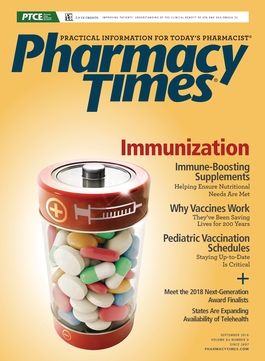Publication
Article
Pharmacy Times
Employee Influenza Shots Increasingly Mandated by Hospitals
Author(s):
With flu season around the corner, hospitals and other health care facilities will soon be encouraging staff members to protect themselves from the virus with an annual vaccine.
With flu season around the corner, hospitals and other health care facilities will soon be encouraging staff members to protect themselves from the virus with an annual flu shot.
Notably, a recent study has indicated that hospitals are increasingly requiring workers to be vaccinated against influenza, though Veterans Affairs (VA) hospitals lag behind in this area.1
The study, published in JAMA Network Open, evaluated data from a 2013 questionnaire about employee immunization requirements that was sent to all general hospitals in the United States with an intensive care unit (ICU) and at least 50 beds, as well as to all VA hospitals. In 2017, the research team then administered the same survey to a random sampling of 900 US general hospitals with an ICU and to all VA hospitals.
Based on their analysis, the researchers found that the percentage of non-VA hospitals with flu vaccine mandates rose from 44% in 2013 to 70% in 2017. Comparatively, they found that the percentage of VA hospitals that required staff members to be immunized only increased from 1% to 4% during the same period.
The survey results also showed that 83% of hospitals with flu shot mandates required unvaccinated employees to wear masks while interacting with patients during flu season, compared with 41% of hospitals without immunization requirements. Additionally, all mandate hospitals had formal policies in place that outlined how workers could officially decline immunization, as opposed to about 66% of non-mandate facilities.
Previous research has suggested that requiring health care workers to receive the flu vaccine can reduce absenteeism.2
“In just 4 years, the non-VA hospitals have really stepped up on requiring the vaccine, rather than just encouraging it,” lead researcher Todd Greene, PhD, MPH, said in a statement. “Studies have shown that vaccination mandates, coupled with an option of declining vaccination in favor of wearing a mask, are most effective in reaching high percentages of vaccination.”
References
- Greene MT, Fowler KE, Ratz D, Krein SL, Bradley S, Saint S. Changes in influenza vaccination requirements for health care personnel in US hospitals. JAMA Network Open. 2018;1(2) e180143. doi: 10.1001/jamanetworkopen.2018.0143.
- Frederick J, Brown AC, Cummings DA, et al. Protecting healthcare personnel in outpatient settings: the influence of mandatory versus nonmandatory influenza vaccination policies on workplace absenteeism during multiple respiratory virus seasons. Infection Control Hosp Epidemiol. 2018;39(4):452-461. doi: 10.1017/ice.2018.9.

Newsletter
Stay informed on drug updates, treatment guidelines, and pharmacy practice trends—subscribe to Pharmacy Times for weekly clinical insights.






